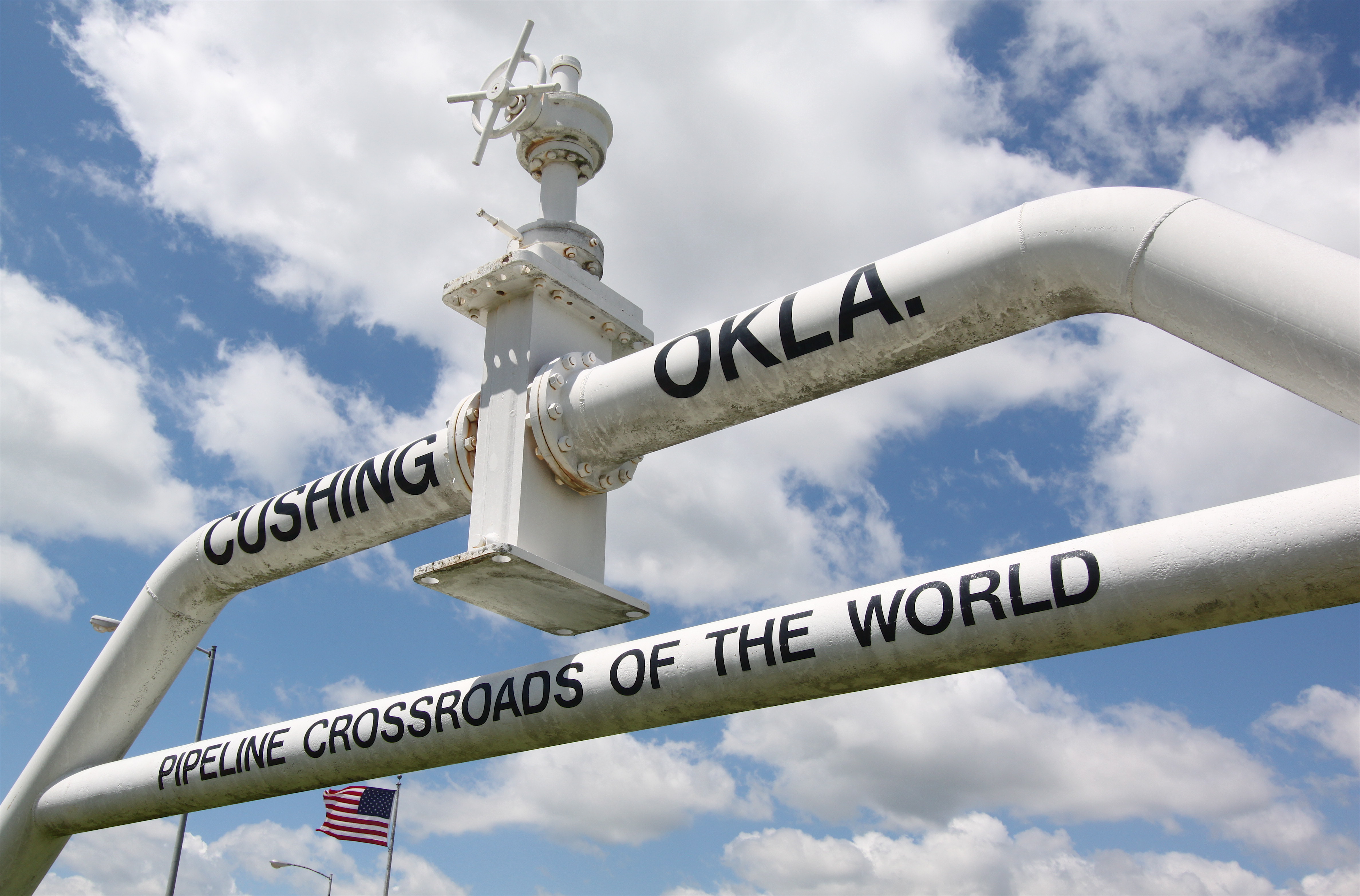U.S. Oil Inventories at Cushing Storage Hub Drop to Lowest in a Decade
(Reuters) — U.S crude inventories at the country's flagship storage hub in Cushing, Oklahoma, fell to their lowest in over a decade amid strong refining activity and a year-end tax measure, data from the government's energy statistics arm showed on Wednesday.
Stocks of oil at Cushing fell by 2.5 million barrels last week to about 20 million barrels, the lowest since Oct 2014, data from the U.S. Energy Information Administration showed. The fall was also the largest since August 2013.
Tank storage of below 20 million barrels, or between 10% and 20% of Cushing's about 98 million barrels of capacity, is considered close to operational lows, according to traders.
Below those levels the oil is difficult to remove.
Many companies and traders often shift oil out of storage in late December to avoid a tax, called the ad-valorem tax, levied on the assessed value of the assets or goods at year-end.
Refineries were also running at around 93.3% of operational capacity, a near six-month high, adding to strong demand for crude. Inventories should likely go up when refineries start maintenance in coming months, analysts said.
"Everybody expects Cushing to go back higher," said Robert Yawger, director of energy futures at Mizuho in New York.
Supplies should eventually climb because lower Cushing inventories are expected to boost prices, attracting barrels from the Permian and limiting outflows from the Mid-continent to the U.S. Gulf Coast.
Some pipeline and storage operators may limit outflows for operational purposes.
Operational Challenges
Oil at the bottom of tanks is unlikely to meet quality standards mandated by refiners and exporters as water and other sediments often settle at the base of storage tanks.
While some tanks have outlets at the bottom that can be used to empty oil and sludge completely, others do not. For those facilities, the oil at the base cannot be removed completely.
Additional pressure is also required to move the oil.
At lower levels, it becomes more expensive for companies to get the remaining crude out of the tanks.
Roofs of storage tanks also float on the oil, preventing vapors from building up or escaping into the atmosphere. When the legs of these roofs touch the base, it creates a gap between the oil and the roof, causing combustible vapors to form.
Related News
Related News

- 1,000-Mile Pipeline Exit Plan by Hope Gas Alarms West Virginia Producers
- Valero Plans to Shut California Refinery, Takes $1.1 Billion Hit
- Three Killed, Two Injured in Accident at LNG Construction Site in Texas
- Greenpeace Ordered to Pay $667 Million to Energy Transfer Over Dakota Access Pipeline Protests
- Boardwalk’s Texas Gas Launches Open Season for 2 Bcf/d Marcellus-to-Louisiana Pipeline Expansion
- New Alternatives for Noise Reduction in Gas Pipelines
- Construction Begins on Ghana's $12 Billion Petroleum Hub, But Not Without Doubts
- Missouri Loses Control Over 1.5 Million-Mile Gas Pipeline Network as Feds Step In
- Gazprom’s Grandeur Fades as Europe Moves Away from Russian Gas
- Greenpeace Ordered to Pay $667 Million to Energy Transfer Over Dakota Access Pipeline Protests





Comments